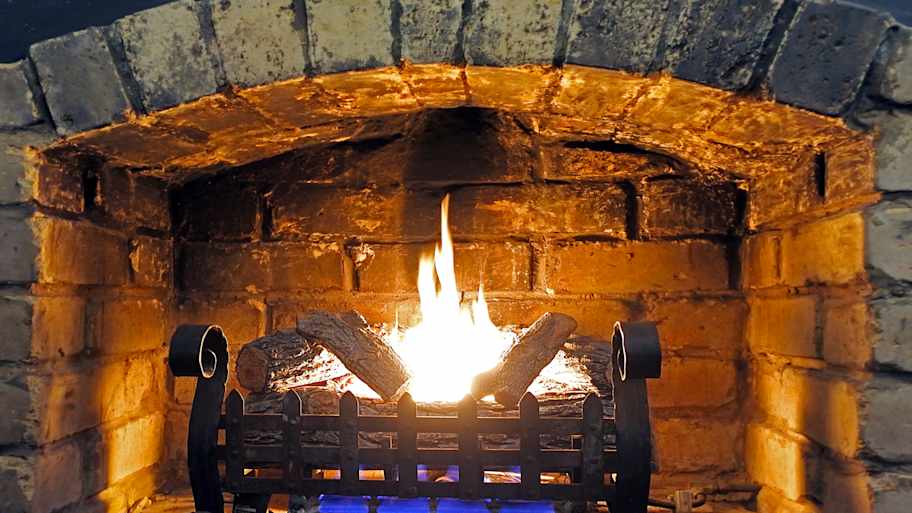
Chimney sweep costs can be dramatically affected by the type of chimney, its location, and how dirty it is.
Cleaning off creosote isn’t tricky, but accessing a chimney is often a job for the pros


You might not have noticed that your chimney or gas-powered lawn mower features a small, simple and potentially life-saving device. Metal mesh spark arrestors prevent burning particles from escaping from chimneys or combustion engines and causing a house fire. However, when the mesh gets clogged with carbon particles, it can reduce airflow, cause performance issues, and contribute to a buildup of toxic fumes.
Learn when and how to clean a spark arrestor to promote safe and efficient operation.
Before cleaning a spark arrestor, ensure it’s cool. If it’s a chimney spark arrestor, the fireplace or wood-burning stove connected to the chimney should be fully extinguished.
For a spark arrestor on a combustion engine of a generator or gas-powered tool, ensure the engine and muffler are cool, and the engine switch, fuel valve, and spark plug wire are off or disconnected. Refer to the manufacturer's instructions, as the spark arrestor's location, look, and size can vary depending on the engine type and model.
It’s not difficult to clean a spark arrestor—all it takes is a little elbow grease with a wire brush, followed by spraying compressed air across the spark arrestor to remove any remaining loose particles. However, accessing a chimney spark arrestor is much more challenging than one on your gas-powered tool or generator. It’s often safer to have a professional chimney sweep complete the job.
The spark arrestor on a combustion engine is typically located on the muffler exhaust tube. To access it, you may need to remove the muffler cover with a screwdriver. Sometimes, you can also remove the spark arrestor to clean it better. Always refer to the owner's manual for specific instructions on access and removal.
The chimney spark arrestor is below or part of the chimney cap, right at the top of the chimney. That means you have to access the roof, and this can be dangerous, especially on sloping roofs. It's best to only do this on a flat roof, and only if the weather is dry and calm and you have the right safety equipment and experience. Always have a friend or family member supervising.
Some safety tips for accessing a flat roof safely include:
Follow proper ladder safety guidelines, and place the ladder on secure, flat ground, ensuring it extends several feet above the roof.
Angle the ladder so that for every 4 feet in height, you move the base 1 foot away from the house.
Have your helper hold the base of the ladder as you climb.
While climbing, face forward and always keep three points of contact on the ladder.
Step around, not over the ladder once you reach the roof.
Attaching a safety harness to the chimney while you work is a sensible safety precaution.
If there are any concerns, leave the job to a chimney contractor to prevent safety risks.

It's easy to scrub off any carbon buildup on the spark arrestor mesh using a wire brush. Continue to do this until the silver metal appears.
Wearing a face mask and goggles prevents carbon particles from getting into your eyes or mouth.
Spraying compressed air across the spark arrestor can lift any remaining loose carbon particles dislodged during the scrubbing process.

If you’re cleaning a chimney spark arrestor, inspecting the flue while you’re up there is a good idea. If you notice a buildup of shiny, black fireplace creosote on the chimney walls, it’s time to call a local chimney sweep to clean it.
Learning how to clean a spark arrestor isn't difficult, and you can do it in less than half an hour. However, if a chimney spark arrestor needs cleaning, it's best to leave this job to a professional chimney sweep near you.
Roofs are slippery, and falling from one can be fatal. They're also fragile, and if you do damage up there, the cost to repair your roof could be high. Plus, if something goes wrong while you’re up there, you risk invalidating your home insurance.
From average costs to expert advice, get all the answers you need to get your job done.

Chimney sweep costs can be dramatically affected by the type of chimney, its location, and how dirty it is.

Your chimney sweep may not wear a top hat and dance on the ceiling, but they will keep your home safe by providing chimney inspections and cleanings. Follow these steps to learn how to hire a qualified and trusted chimney sweep in your town.

Drab-looking chimney bricks can make your home look unkempt. This guide will help you learn how to clean chimney bricks without damaging the structure.

When comparing vented versus ventless gas logs, vented logs are better for ambiance, while ventless gas logs are easier to install and heat a room efficiently.

Wondering how often to clean a chimney? Our guide will walk you through the recommended frequency, best time of year, and common signs your chimney’s due for a cleaning.

Knowing how to use a creosote sweeping log for additional maintenance in between your annual chimney sweep can help keep your home safe from fires.